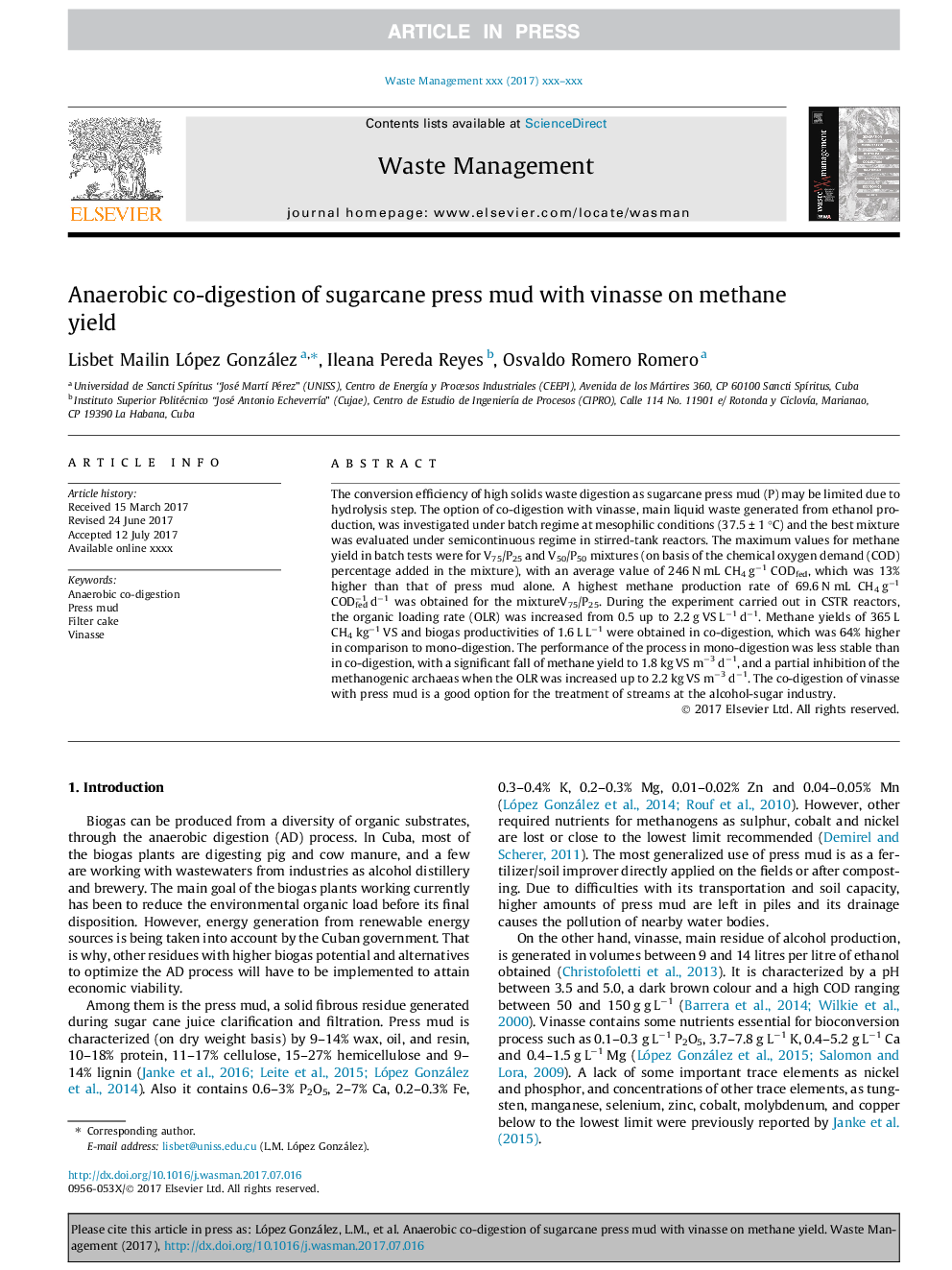| Article ID | Journal | Published Year | Pages | File Type |
|---|---|---|---|---|
| 5756563 | Waste Management | 2017 | 7 Pages |
Abstract
The conversion efficiency of high solids waste digestion as sugarcane press mud (P) may be limited due to hydrolysis step. The option of co-digestion with vinasse, main liquid waste generated from ethanol production, was investigated under batch regime at mesophilic conditions (37.5 ± 1 °C) and the best mixture was evaluated under semicontinuous regime in stirred-tank reactors. The maximum values for methane yield in batch tests were for V75/P25 and V50/P50 mixtures (on basis of the chemical oxygen demand (COD) percentage added in the mixture), with an average value of 246 N mL CH4 gâ1 CODfed, which was 13% higher than that of press mud alone. A highest methane production rate of 69.6 N mL CH4 gâ1 CODfedâ1 dâ1 was obtained for the mixtureV75/P25. During the experiment carried out in CSTR reactors, the organic loading rate (OLR) was increased from 0.5 up to 2.2 g VS Lâ1 dâ1. Methane yields of 365 L CH4 kgâ1 VS and biogas productivities of 1.6 L Lâ1 were obtained in co-digestion, which was 64% higher in comparison to mono-digestion. The performance of the process in mono-digestion was less stable than in co-digestion, with a significant fall of methane yield to 1.8 kg VS mâ3 dâ1, and a partial inhibition of the methanogenic archaeas when the OLR was increased up to 2.2 kg VS mâ3 dâ1. The co-digestion of vinasse with press mud is a good option for the treatment of streams at the alcohol-sugar industry.
Related Topics
Physical Sciences and Engineering
Earth and Planetary Sciences
Geotechnical Engineering and Engineering Geology
Authors
Lisbet Mailin López González, Ileana Pereda Reyes, Osvaldo Romero Romero,
